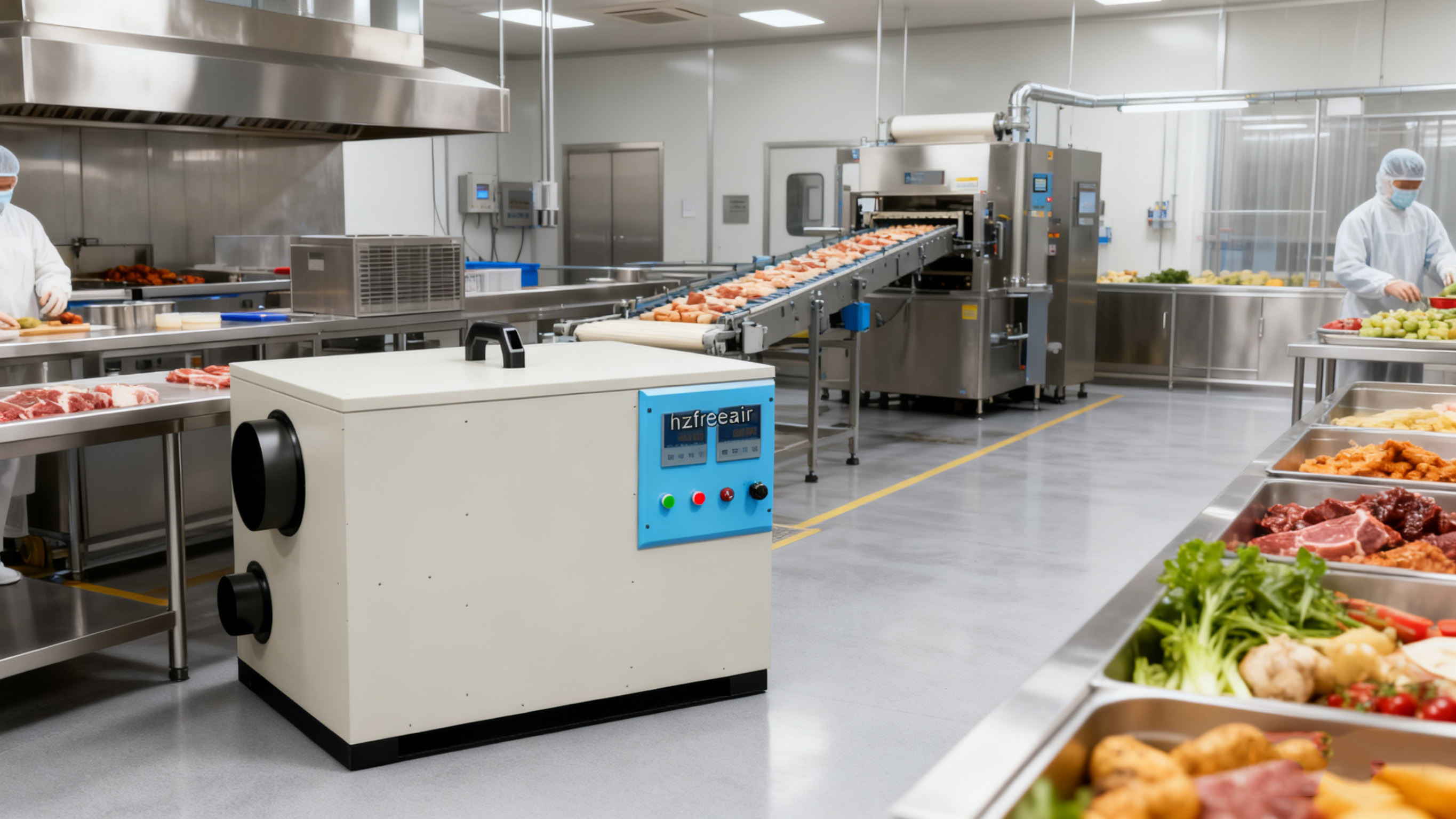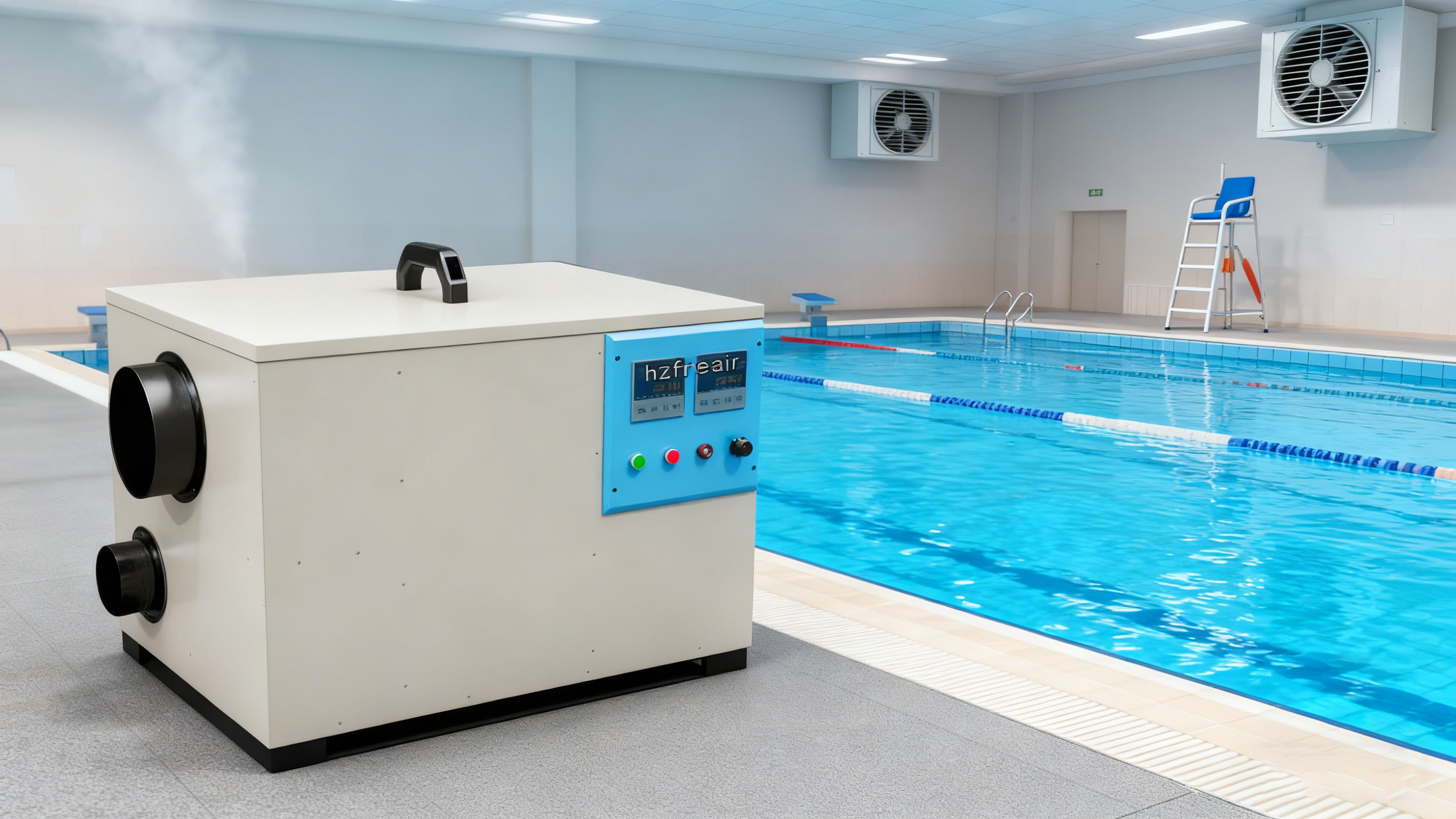


When people mention “dehumidifiers,” the first image that often comes to mind is a small household appliance used to
combat the rainy season. Yet behind the scenes in the industrial world, a more powerful dehumidification solution—the
desiccant dehumidifier—is playing an indispensable role in numerous critical sectors vital to national economy and people's
livelihood. It is no longer merely an accessory for comfortable living, but an “invisible guardian” in modern industrial
production, safeguarding quality, boosting efficiency, and ensuring safety.
Core Technology: Why the “Desiccant”?
Unlike traditional dehumidification methods that rely on compressor-based refrigeration and suffer efficiency drops in
extreme temperatures, the desiccant dehumidifier's core lies in its continuously rotating honeycomb-shaped desiccant
wheel. Coated with high-performance moisture-absorbing material, this wheel physically adsorbs water molecules from
passing air like a sponge soaks up water. This process operates independently of temperature, enabling desiccant dehumidifiers
to deliver exceptionally dry air with stable, high efficiency even in harsh low-temperature, low-humidity environments.
It is precisely this “all-weather” dehumidification capability that allows them to excel in the following industrial sectors.
I. Lithium Battery Production: Safeguarding the “Energy Heart” with Ultimate Dryness
Within the new energy industry, lithium battery production demands near-obsessive control over environmental humidity.
Even trace moisture can react with electrolytes to generate harmful gases, causing battery swelling, performance degradation,
and severe safety risks. Consequently, every stage—from coating and rolling to electrolyte filling and encapsulation—must
occur within an ultra-dry environment with dew points as low as -40°C or below.
Desiccant dehumidifiers act as meticulous “environmental stewards,” continuously supplying stable, ultra-low dew point
air to drying chambers and ovens, completely isolating moisture intrusion. They safeguard not only the energy density and
cycle life of batteries but also the fundamental safety baseline of the entire product, making them indispensable core
environmental control equipment in high-end lithium battery manufacturing.

II. Pharmaceutical Industry: Erecting a “Humidity Barrier” for Drug Quality
The purity and stability of pharmaceuticals directly impact public health and safety. Humidity control is critical throughout
the entire process—from storing active pharmaceutical ingredients (APIs) and excipients to producing tablets, capsules,
and sterile powder injections. Excessive humidity causes drugs to absorb moisture and clump, triggers chemical reactions
that degrade efficacy, and even fosters microbial growth leading to contamination.
In pharmaceutical GMP (Good Manufacturing Practice) cleanrooms, desiccant dehumidifiers precisely maintain humidity
at preset low levels. They ensure a stable production environment, prevent drug degradation, safeguard packaging line
efficiency, and provide a robust “humidity barrier” throughout the entire drug lifecycle—from raw materials to finished
products—firmly protecting pharmaceutical quality and safety.

III. Food Processing: The “Moisture Guardian” Preserving Freshness and Flavor
In the food industry, moisture is the primary culprit behind mold growth, spoilage, clumping, and bacterial proliferation.
Whether it's snacks like milk powder, potato chips, or candies; staples such as biscuits and noodles; or condiments and
pet food—all are highly sensitive to environmental humidity during cooling, packaging, and storage.
Desiccant dehumidifiers effectively reduce air humidity in production and packaging areas, preventing products from
softening or deteriorating due to moisture absorption and significantly extending shelf life. Simultaneously, the dry
environment inhibits microbial growth, elevating food safety standards. Acting as a silent “moisture guardian,” it locks
in food's crispness, dryness, and original flavor, earning businesses market credibility.

IV. Swimming Pool Facilities: Environmental Warriors Against High Humidity, Condensation, and Corrosion
Indoor swimming pools constantly evaporate large amounts of water vapor, creating a high-humidity environment that not
only feels stifling and uncomfortable but also triggers a series of serious issues: Condensation dripping from walls and ceilings
accelerates structural corrosion and mold growth. More critically, high humidity intensifies chlorine evaporation from pool
water, forming highly corrosive chloramine gas that severely damages steel frames, HVAC systems, and electrical equipment,
shortening the facility's lifespan.
Desiccant dehumidifiers offer a comprehensive solution to this complex environment. They not only efficiently remove excess
moisture from the air to prevent condensation but also, through proper ventilation design, effectively expel corrosive gases.
This creates a dry, comfortable, and safe indoor environment for the facility, fundamentally protecting building structures and
equipment assets while significantly reducing operational and maintenance costs.

Conclusion
From new energy batteries driving the future to pharmaceuticals safeguarding health; from indispensable daily foodstuffs to
public spaces offering leisure—desiccant dehumidifiers are ubiquitous. They have long transcended the realm of “home
appliances,” becoming foundational technical equipment supporting modern industrial precision manufacturing, quality
control, and safe production. As industrial development demands increasingly stringent production environment standards,
the application scope of desiccant dehumidifiers will inevitably expand further, playing a crucial role on more unseen battlefields.